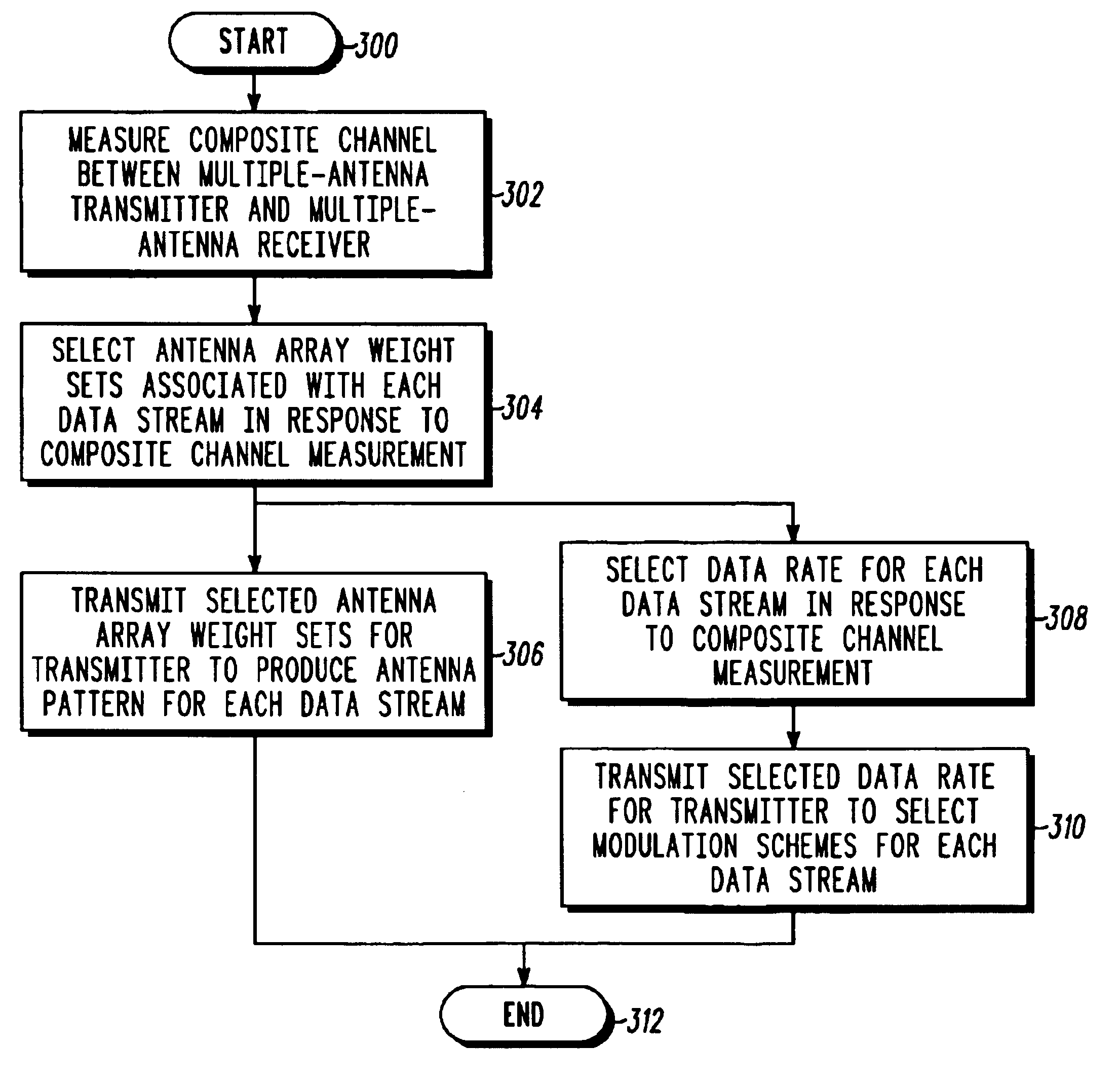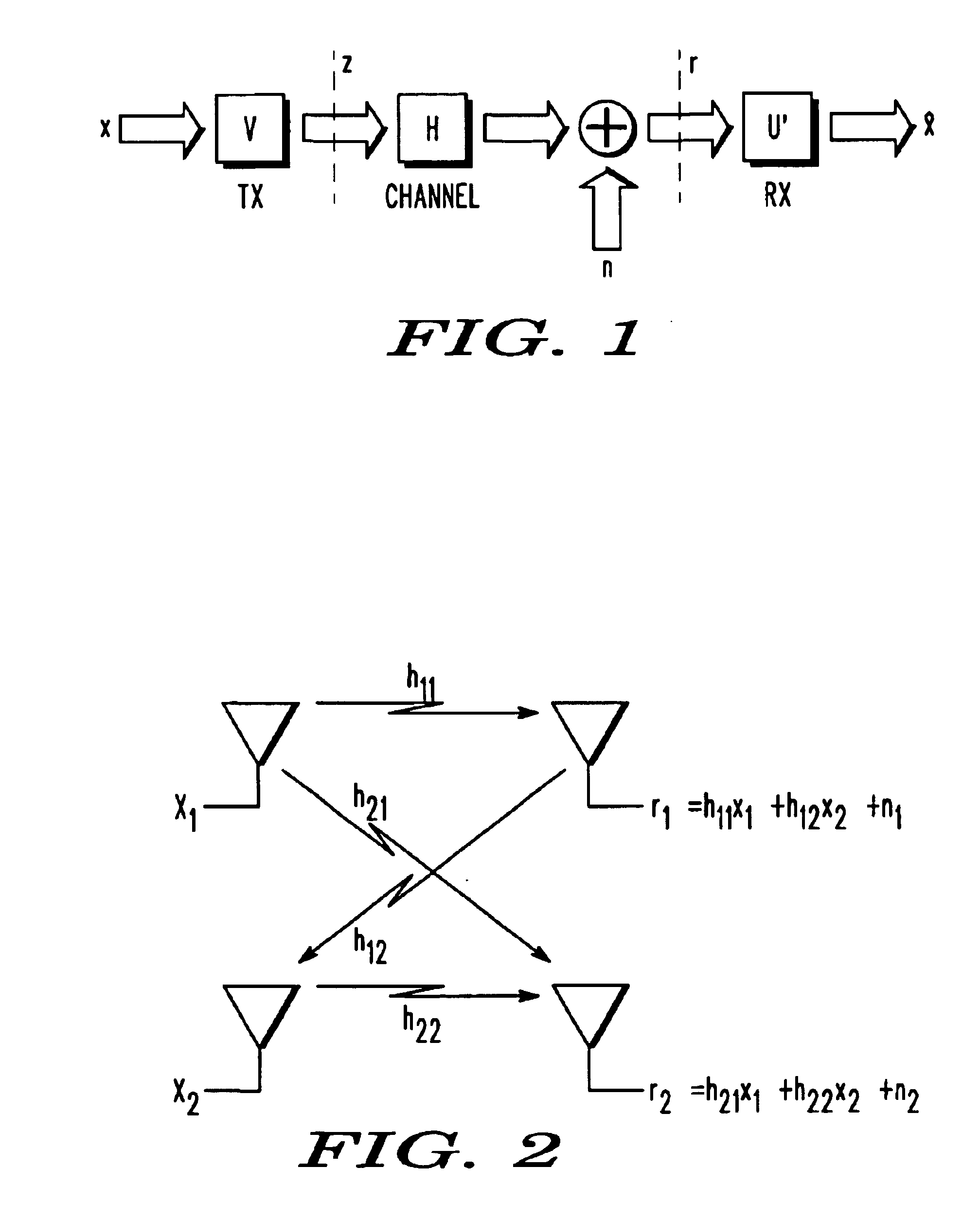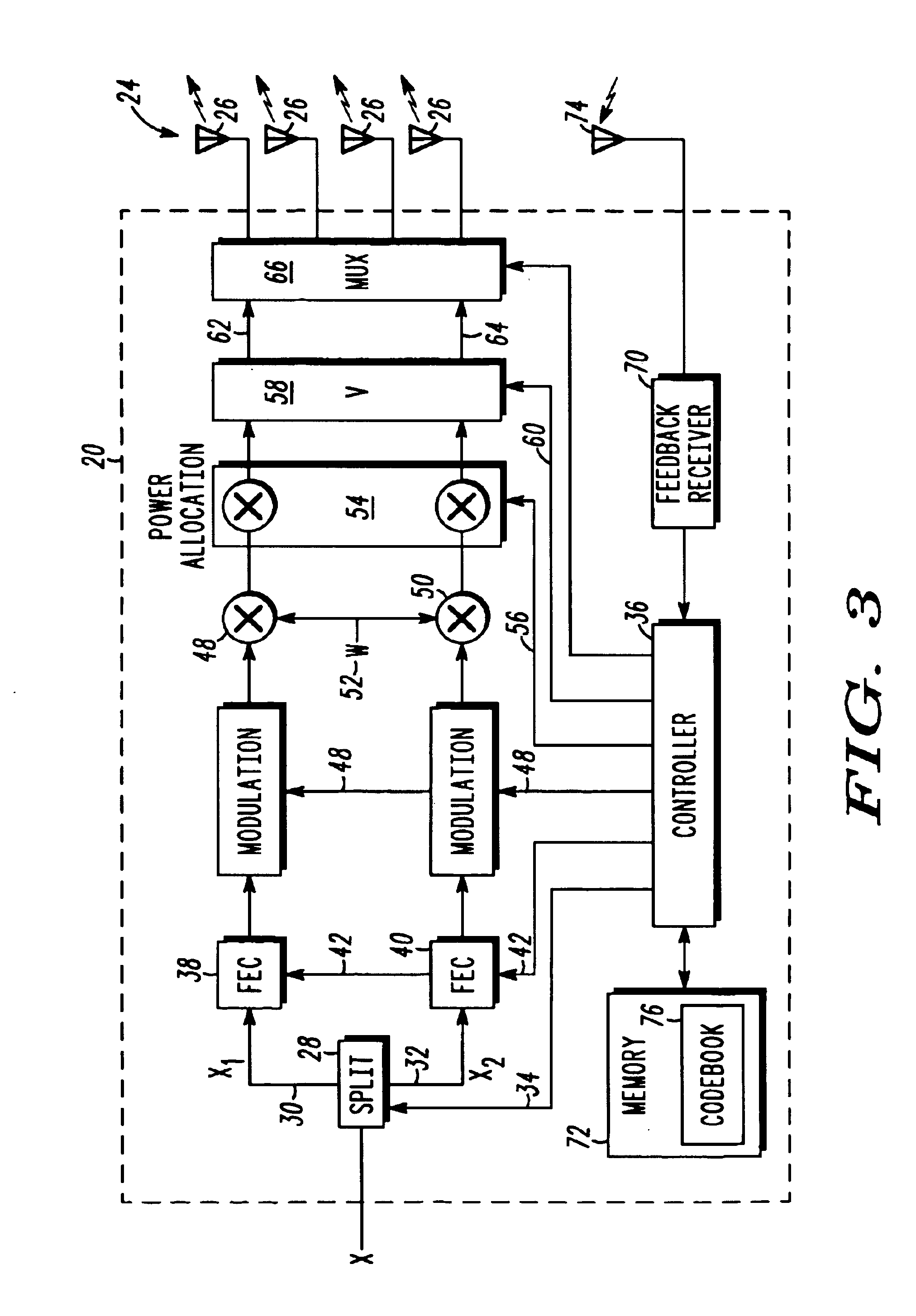Method and system in a transceiver for controlling a multiple-input, multiple-output communications channel
- Summary
- Abstract
- Description
- Claims
- Application Information
AI Technical Summary
Problems solved by technology
Method used
Image
Examples
Embodiment Construction
With reference now to FIG. 3, there is depicted a multiple-stream, multiple-antenna transmitter that may be used to implement the method and system of the present invention. As illustrated, transmitter 20 receives user data 22 and transmits user data 22 using antenna array 24, which comprises antenna elements 26.
User data 22 enters data splitter 28, which separates the user data stream into a plurality of data streams, such as data stream 30 and data stream 32. While two data streams are shown in FIG. 3, data splitter 28 may produce any number of data streams. Data splitter 28 splits data in proportion to control signal 34, which is produced by controller 36. For example, control signal 34 may specify a ratio of 2-to-1, wherein two bits are sent to data stream 30 and one bit is sent to data stream 32. This splitting ratio may specify an equal number of bits on both streams, or all data bits are sent to one stream.
Data streams 30 and 32 output by data splitter 28 are input into error...
PUM
 Login to View More
Login to View More Abstract
Description
Claims
Application Information
 Login to View More
Login to View More - R&D
- Intellectual Property
- Life Sciences
- Materials
- Tech Scout
- Unparalleled Data Quality
- Higher Quality Content
- 60% Fewer Hallucinations
Browse by: Latest US Patents, China's latest patents, Technical Efficacy Thesaurus, Application Domain, Technology Topic, Popular Technical Reports.
© 2025 PatSnap. All rights reserved.Legal|Privacy policy|Modern Slavery Act Transparency Statement|Sitemap|About US| Contact US: help@patsnap.com



